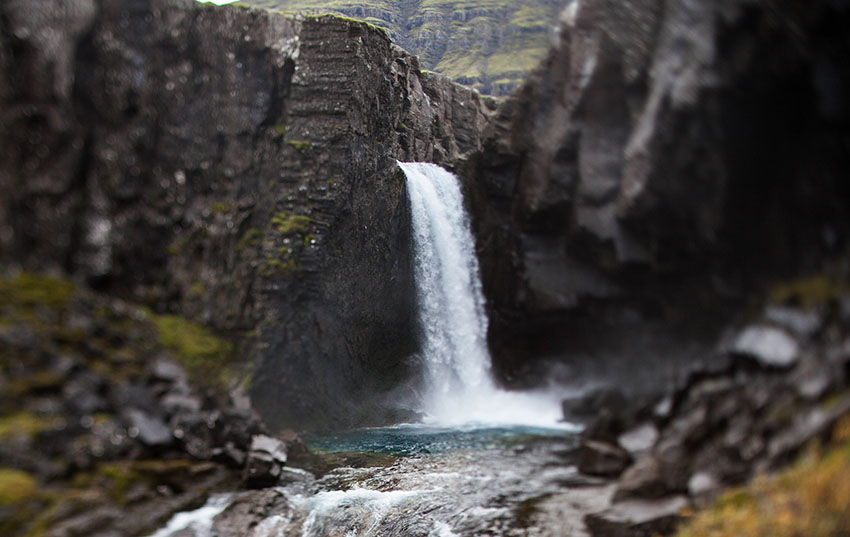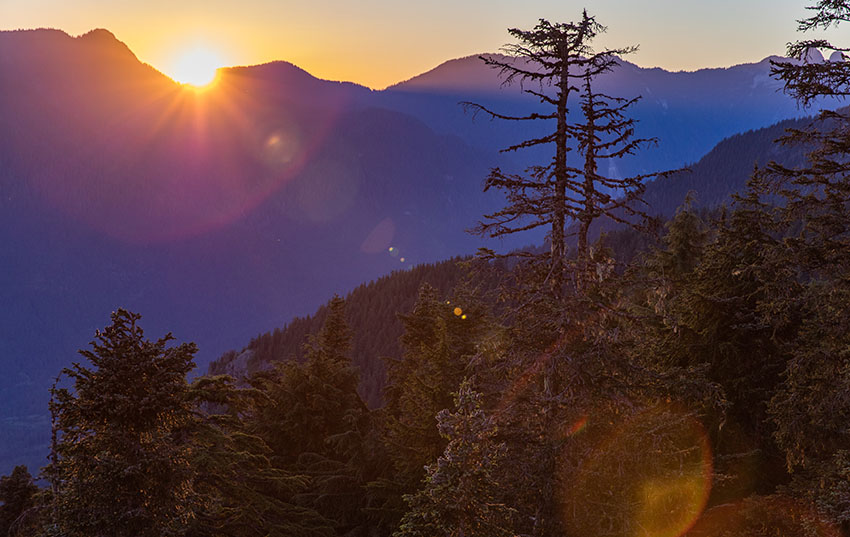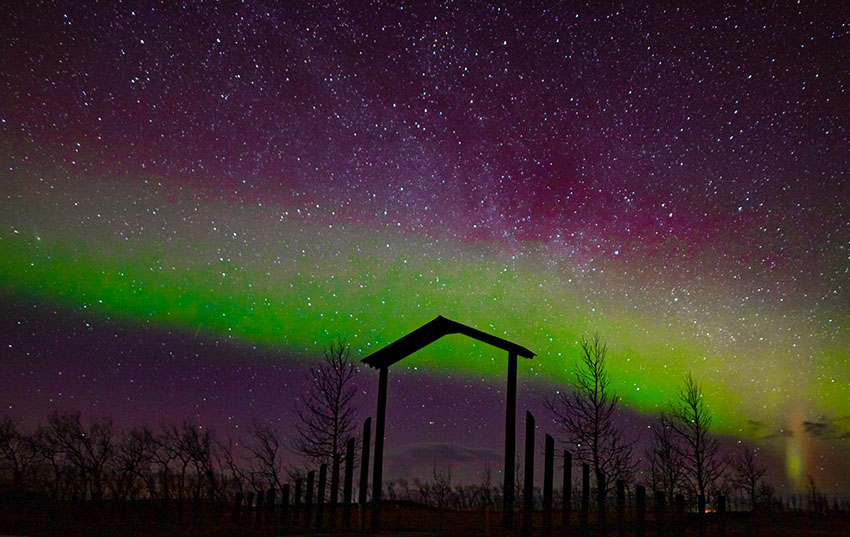By Extended Studies,

This August marks World Photography Day, an annual, global celebration of the art, craft, science, and history of photography. It’s an opportunity and call to share and like photographs on social media, with a 2023 theme of landscape photography. From August 19-26, World Photography Week ensues, pushing the day-long celebration into a full week of daily photo sharing.
In the spirit of this year’s #WorldPhotographyDay theme and the ensuing #WorldPhotographyWeek of celebration, we talked to Ellyn Norris, instructor in the UC San Diego Division of Extended Studies Destination Photography travel photography course to get insights about landscape photography techniques.
When it comes to soul-stirring photography, there’s nothing more beautiful or evocative than a majestic landscape that puts you in the heart of a location.
Everyone’s seen a photograph that transmits you right into the sense of place. Whether it’s a winding road up a snowy, windswept mountain top that brings a chill to the skin, or a camel train on a desert slope that ignites a sense of adventure, you feel yourself right there, in the moment.
As a photographer, it can be challenging to capture a soaring panorama that conveys such intimacy of the moment. The task is made tricky by the fact that you’re translating a large, awe-inspiring scene to a small picture.
“One of the big things with landscape that I find is a disconnect between you standing in a vast landscape and observing mountains, sky, clouds, trees,” said Norris. “And then you capture it on this little screen, and it doesn’t look as epic.”
As a student or professional photographer seeking to refine your skills, an avid traveler who wants to capture great photos on your next trip, or someone who wants to share and learn in community, how do you master landscape photography?
Building on photography essentials from our previous article, How to Take Better Photographs in 2023: Understanding the Four Elements of Good Photography, Norris shared key landscape photography techniques to overcome the unique challenges with this genre.
Get Closer

If your landscapes are not looking as epic in your photos as it feels when you’re standing in them, Norris recommends heeding famous photojournalist and adventure photographer Robert Capa’s advice: “If it’s not good enough, you’re not close enough.”
According to Norris, capturing a successful landscape photograph is not a matter of simply being on location and taking pictures. Don’t shy away from vast and epic landscapes, but be cognizant of the fact that there’s a disconnect between standing in it versus seeing it on a smaller scale. You can help overcome this disorientation by stepping in.
“Find details you can interact with and capture closer,” said Norris. “When you look back at those photos on an iPad or computer, you’ll see the intimate details of being in nature.”
Through this approach, you create a visual bridge that conveys the breadth and depth of an awe-inspiring landscape in a way that can be intimately experienced—no matter the size of the viewing platform.
“One of my favorite things to do when I travel,” Norris revealed, “is to upload my pictures to our big screen TV. So it gives me more of that experience of being ‘in there.’”
One of Norris’ favorite pieces of advice for her students—what she calls her “Ellynisms”—is that the worst thing a photo can leave you with is nothing.
“If it’s not saying anything, then go back and get creative,” she advises. “Remember: if it’s not good enough, you’re not close enough.”
Observe Time of Day, Season, and Weather

If you’re looking at your landscape images and appreciating the subject you chose, but still feel like you’re not capturing the impact and poignancy, Norris advises that you observe the light. And with that recommendation, understand that lighting is ultimately a factor of the time of day, the season, and the weather.
“It’s really important, whatever landscape you’re in, you realize the time of day and season,” noted Norris. “Winter, in general, you have less light, but the quality is better. In summer, we have more light, but it’s colorless: it doesn’t have the same warmth [as winter].”
This informs how you’ll choose to photograph your landscape, because what you’ll capture is not what you’re seeing in front of you, but what the light is doing.
“One of my most epic experiences with landscape is Iceland, towards the end of November, when there’s only four and a half hours of daylight,” shared Norris. “You’ve got sunrise and sunset within those four and a half hours, so within that time, the shadows stay long, and the light stays warm. So, I’m there at noon, and it’s like sunrise.”
Something Norris teaches her students in her Destination Photography course at UC San Diego Extended Studies to help them understand the effect of light is to observe and photograph the same outdoor scene throughout the day, at different times and even during different seasons. It could be a simple scene off your balcony, or an area of grass on your lawn.
With this kind of light study, you’ll see the quality of colors vary, as the contrast and intensity of color alters with the changing light, from dawn to twilight, or at different times of the year, like during June gloom, the height of summer, or in the midst of winter.
“Light also creates shadow,” noted Norris. “Shadows can be pesky and can distract, but they can also create and enhance mood.”
Another challenge to be aware of is the contrast range apparent within an image.
“Our eye sees so many more tones than a camera can record and capture,” continued Norris.
Photography, she explained, is understanding the language between what our eyes and brain see—and what our camera can record.
“If you look at a sky, which can be very bright and have clouds, depending on the day, and then you see shadow areas under a tree, know that it’s really hard for our [camera’s] digital sensors to get that shadow and keep the detail whites in the clouds. So once again, time of day has to do with that,” Norris explained.
Understand and Practice the Exposure Triangle

Many photographers appreciate the science behind the art and how the two interact to create the perfect image. In order to produce photos that match your vision, it’s important to have an understanding of the technical aspects that support your results.
“What I’ve loved most about photography all my life, and I've been shooting since I was nine years old, is that it's an opportunity to be creative, but also technical at the same time,” shared Norris. “You have to know the science behind it, the technical, in order to envision it.”
When it comes to landscape photography, Norris references the exposure triangle, a concept she teaches in her UC San Diego Extended Studies course, Photo 1: Aperture, Shutter Speed & ISO.
The premise is that three dependent elements work together to produce a photograph with proper exposure. The trick is, if one of the variables changes, at least one of the others must also be adjusted. In that way, you maintain correct exposure.
“ISO sets the sensitivity of your camera’s sensor,” she explained. “Then you have the shutter speed and aperture—and knowing how to control those elements in the exposure triangle allows you to make different images of landscape in nature.”
Gaining knowledge of and experience with the exposure triangle will create opportunities to more accurately capture what your eyes are seeing.
“Have you ever taken a photo? And you're like, Wow: how did I do this? You know, we've all had those moments?” laughed Norris. “One of my favorite things to say to students is, knowing the background of the exposure triangle, along with light, and what light does at different times of the day, in different seasons and weather—you can create and envision from there.”
Be in the moment

A critical piece of advice from Norris is to remember to be present and go with the flow. When your photography converges with life’s unexpected moments, it can yield amazing results and become a conduit of your unique journey.
“There are opportunities in nature to always be surprised at what you experience – and to capture it,” she shared.
In addition to working as a photographer and instructor, Norris leads travel photography tours all over the world. One of her favorite places to take students is Iceland, where the skies are always beautiful and there are no natural predators, so the horses and sheep have no fear and roam free. The Northern Lights are always appealing to visitors, especially photographers.
She related a story taking a group of travelers to Iceland one March. They had seen the Northern Lights on their trip, but only faintly. On the last night of the trip, they were heading from east to west, and the weather was gloomy with clouds, alternating between snow and rain.
They arrived at their hotel in the lava fields of the South West, a very dark area chosen for low light pollution to optimize photography opportunities.
“We’re eating dinner, and they’re looking out in this fog,” related Norris about her group of despairing travelers. “And, I said, ‘Don’t worry, the clouds are going [away] at nine o’clock, and it’s going to be epic. And, the Northern Lights are active, so hopefully we’ll see them.”
The students were dubious, but headed back to their rooms to follow Norris’ instructions to watch and wait. And, then the text came.
“It was from a couple of UC San Diego Extended Studies students, and they were just amazed,” said Norris.
One of the students, an engineer who hailed from Argentina, said the lights were epic. But, what surprised him is that he had no idea there were so many stars visible in the black sky.
“It just freaked him out. He said he had never experienced anything like that,” laughed Norris. “I think with landscape, a great takeaway is: you never know. Have the tools, look at the weather [reports]. I always watch for opportunities. It may be 4 a.m.! People have to go with the flow.”
More than that, Norris advises to look at what’s around you and figure out what the story is. The answer starts with you.
“I always tell my students, don't forget to let the experience be number one,” said Norris, sharing another “Ellynism.” “Don’t be so obsessed with what you're going to have afterwards to show for it. Live in the experience.”
—-